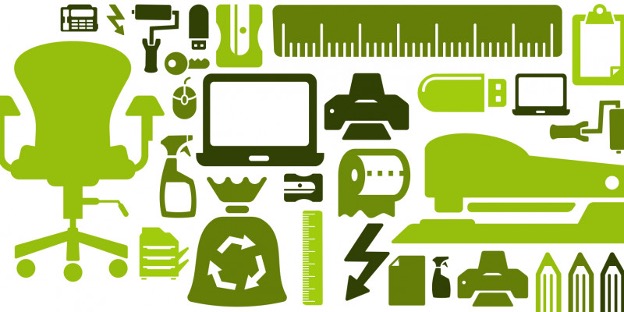COVID-19
Utterly, COVID-19 affected our daily lives, caused shortage of basic commodities on supermarkets shelves, and as do businesses. And unequivocally, It caused a lot of disruptions too to businesses’ operations and its procurement departments. For a lot of those impacted companies, COVID-19 disruptions were the alarm bells. Additionally, this created an emerging urgency for companies to reformulate new policies and operations to adapt to the situation. Particularly, we are talking about the supply chain function.
Pressures have been piled up on organizations’ supply chain managers and decision-makers to fill these shortage gaps up for their B2B partners and end consumers. Organizations’ and brands’ operations got distorted heavily by a lot of challenges. Consequently, They have to reset profitability and reduce costs, particularly in shipping costs and efficiency, to overcome pressures from regulatory bodies, consumers, investors, and supply chain partners.
In procurement, achieving old or pre-COVID profit figures is the key challenge here, profit and other priorities have to reset. In Deloitte’s 2023 Global Chief Procurement Officer Survey says that supply-chain decision-makers are in front of stricter range priorities. Priorities are, for instance, driving operational efficiency (74% of respondents) and improving supply chain profit margins via cost reduction (71%).
With that in mind, an advantage of COVID-19 sets higher standards and measures of sustainability and continuity of procurement in terms of profit versus cost and other objectives. Thus, sustainability and continuity become the mandatory, not an extra effort or exception.
Procurement
Therefore, as a logic sequence, the above brings us to the question “What is Procurement Sustainability” cycle and what it beholds for organizations, consumers, the environment, and stakeholders. The mnemonic for procurement sustainability is known as ESG/E (Environmental, Social, and Governance or Economic).
Environmental damage facets are: excessive demands on nonrenewable resources, pollution and other impacts to environments. To reduce these impacts, some objectives are;
- Partnership with environmental conscious suppliers who have minimal negative impact on environment and fairer trade,
- placing more importance on the usage of raw materials that are sourced responsibly and renewable,
- reducing post-production harmful substances or excessive shipment packaging waste,
- embracing the use of renewable energy, recycled and unendangered resources for shipping, operations, and even during the tendering with potentials suppliers,
- preserving climate change: and this is what so-called Green Procurement
The rest of mnemonic is Social and Economic factors are like, fair wages, healthy working environment, anti-child labor, fighting economic changes like market fluctuations in currencies or price spikes.
Real-Life Example of Green Procurement and its sustainability: from Procurementtactics

The Barcelona Metropolitan Area wanted to move to greener energy by creating car parking with electric charging by solar panels. To achieve sustainability, The Barcelona Metropolitan Area divided the project in 3 phases to avoid disruptions. Read more on Procurementtactics: Case-Study: Procuring solar vehicle-to-grid (V2G) charging stations for electric vehicles in Barcelona Metropolitan Area.
Alternatively in Germany, regarding its Green Public Procurement, Umweltbundesamt (Federal Environment Agency) and German contracting authorities purchase around €300 billion worth of products ranging from pencils to city buses. This reduces pollution, even more this creates new ideas of innovative eco-friendly products. Green Procurement in German is “Umweltfreundliche Beschaffung”
Artificial Intelligence AI
For the organizations to recover faster after COVID-19 impact, Artificial Intelligence AI has a lot to offer to procurement. Using AI achieves higher operation efficiencies, cost and risks reduction. Additionally, AI helps businesses to great extent in taking the right purchasing decisions, get multiple recommendations of multiple products alternative to overcome any supply challenges.
AI tools can recognize change patterns like, emerging unforeseen supply shortage and automatically recommend product alternatives to the decision makers, thereby preventing supply disruptions. These predictive capabilities also empower procurement teams to establish buying policies that proactively account for items that are more likely to go out of stock, enhance the management of supplier relationships, optimize profits growth, and reduce risks.
Challenges in procurement AI can diminish, with these use cases from “Procurement Magazine” shows how procurement can benefit from artificial intelligence.
- Spend Classification: AI techniques, spend classification algorithms dynamically search through line item details and flag keywords to tie to spend categories
- Global Sourcing: AI can identify shifts in global supply trends, gain insights into future trends, and help inform the sourcing strategy for product categories.
- Invoice Data: extraction of invoice data to automate the process, control the workflow, and verify data capture
- Automated Compliance: AI can be used to help structure the contract, invoice, and PO data to identify and highlight non-compliance
- Contract Data Extraction: contract data extraction allows organizations to upload large volumes of contracts in varying electronic forms and extract key information
- Anomaly Detection: When it comes to anomalies, new opportunities, and recommendations, AI is being trialed for its ability to process large amounts of data to provide procurement teams with updates on the latest developments and changes in the operating environment
- Strategic Sourcing: machine learning for the recognition of bid sheets, organizations can develop specialized category-specific e-sourcing bots for raw materials, maintenance, and repairs.
- Supplier Risk Management: AI can help to navigate supplier risk management. The methodologies are used to screen millions of different data sources and provide alerts on potential risk positions across the supply chain.
Sustainability is the common objective between COVID-19, Procurement and Artificial Intelligence.
Finally, do let us know what you think about it. Let us know and connect with the initiator of #SocialProcurement on LinkedIn: Mario Burggmann: Supply Chain Innovator, or check his previous webinars talking about it.
